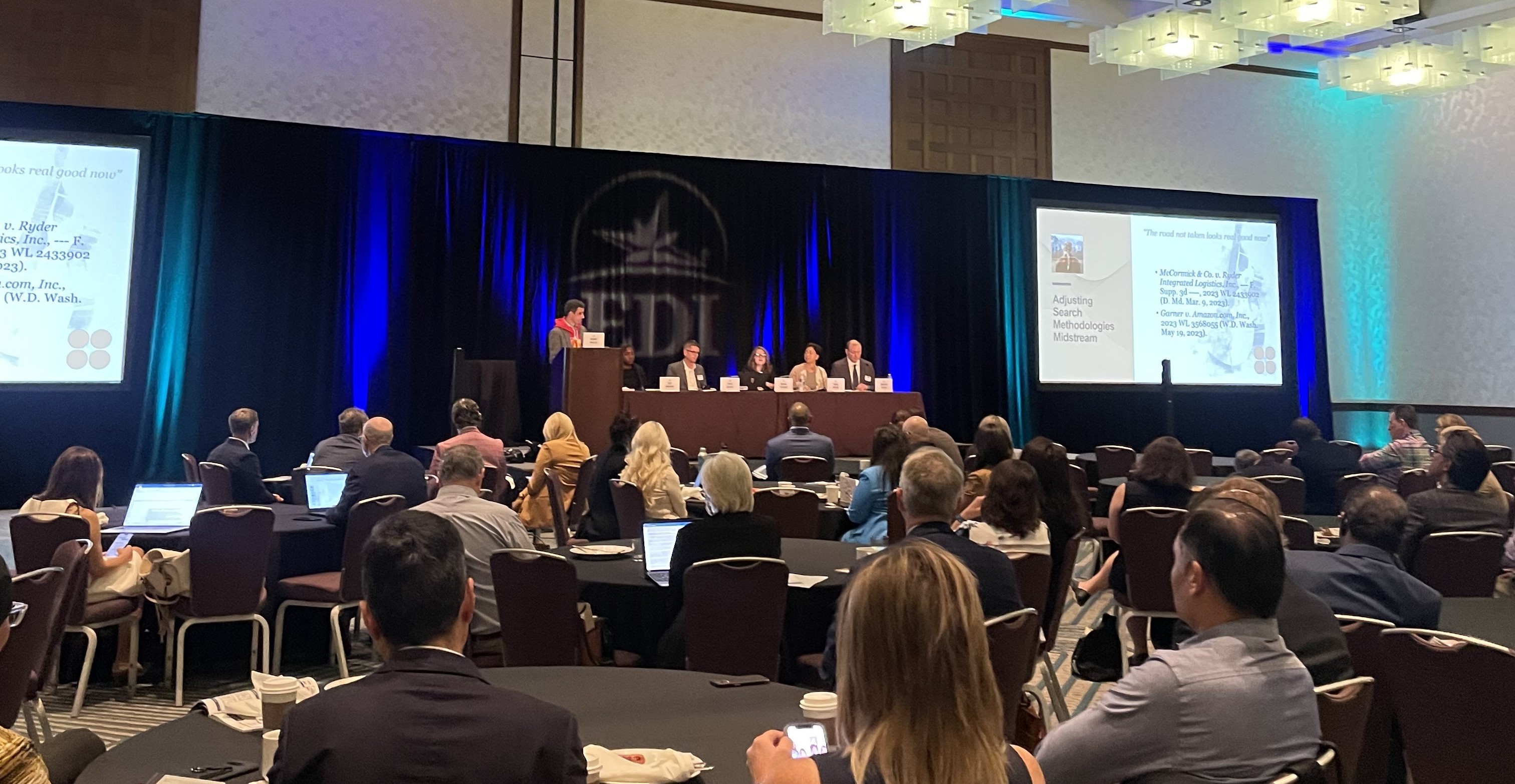In October, the TCDI team had the honor of participating in the 13th annual Electronic Discovery Institute’s Leadership Summit event in southern California. The Leadership Summit is the premier gathering of corporate eDiscovery thought leaders in the world. No other event better reflects the corporate perspective on the eDiscovery industry.
In reflecting on the content of the panel presentations, long-standing themes and issues resonated, but they also reflected an undercurrent of true change for the practice of eDiscovery – a change, perhaps, that has not been felt since around the time of the first Leadership Summit thirteen years ago.
13 Years of Change?
Thirteen years is an eternity in the history of an area as nascent as eDiscovery – or even in the broader context and history of legal technology. But, in many regards, the change we have seen over these past years has been around the edges – dealing with gradual transitions from traditional email-centric corporate communications environments to more chat-based collaborative platforms, etc.
In the end, though these “changes” are really a continued conversation involving the same issues as we faced together thirteen years ago:
- How do we deal with personally-owned but work-utilized mobile devices?
- Where are the defensible boundaries on the preservation of ephemeral or nearly ephemeral data?
- How can ESI protocols provide the necessary predictability (and flexibility) to navigate multi-year complex litigation matters?
- What is the right mix of in-sourcing vs. out-sourcing eDiscovery technologies and expertise?
These questions and the dialogue around them are every bit as critical today as they were thirteen years ago – because, for the most part, no perfect answers have emerged: only more data points and more years of getting comfortable balancing the attendant risks.
So, what indicates that change is coming, or more likely, has already arrived?
What's Really Changing
The hallway conversations have changed. The chats at the coffee stations have changed. Those conversations (especially those involving corporate counsel) were laser-focused on leveraging emerging AI-based technologies to deliver on the long-underrealized promise of saving money and saving time via technology-assisted review (TAR). They proclaimed clearly – “this is not a nice to have this is a must be implemented ASAreasonablyP!”
So, what have we been doing over these years as an industry?
The “Leadership Summit-era” more-or-less coincides with the era of judicial approval to utilize TAR technologies rather than only traditional search-driven linear human review. (Judge Peck’s Da Silva Moore opinion came out in February, 2012).
We as an industry have spent most of the past decade plus trying to make TAR a reasonable alternative to traditional search terms negotiation, manual review, and produce workflows that date back to the 1990s. We have, for the most part, failed. The technologies and their implementation haven’t delivered on the promise to move eDiscovery spend in a direction that has a meaningful impact on how a litigation portfolio can be managed.
When Patience Wears Thin
Please do not laugh (or do) but, by our nature, most litigators are patient. Our matters last for years. We can wait. For the technologies to mature. For the courts and opponents to understand them (a bit). For the promise to be realized.
But the corporate counsel at EDI that collectively manage billions of dollars of discovery-intense litigation spend are beyond impatient. As are their finance and business unit counterparts that continue to be perplexed how other corporate functions can turn technological advances into bottom line cost savings in periods of time far shorter than a decade.
Time to Listen
The conversations from the EDI Leadership Summit made clear – the time for waiting is over. The patience has worn thin. Organizations are already leveraging AI technologies to drive business decisions and strategies in areas that are every bit as fundamental to their future as our use case of “how documents are identified, classified, redacted, and produced in litigation and investigation matters.”
It is now our duty as an industry to listen. To avoid the cautious dance that has best characterized this past decade of TAR. To avoid the excuses, the delays, the “this matter just isn’t a good fit’s.”
The lesson of TAR may be that our patience has been our failing and it is that that must evolve.
If the demeanor of today’s corporate counsel eDiscovery thought leaders at EDI is any indication, the lesson must be heard, and we must truly evolve.





